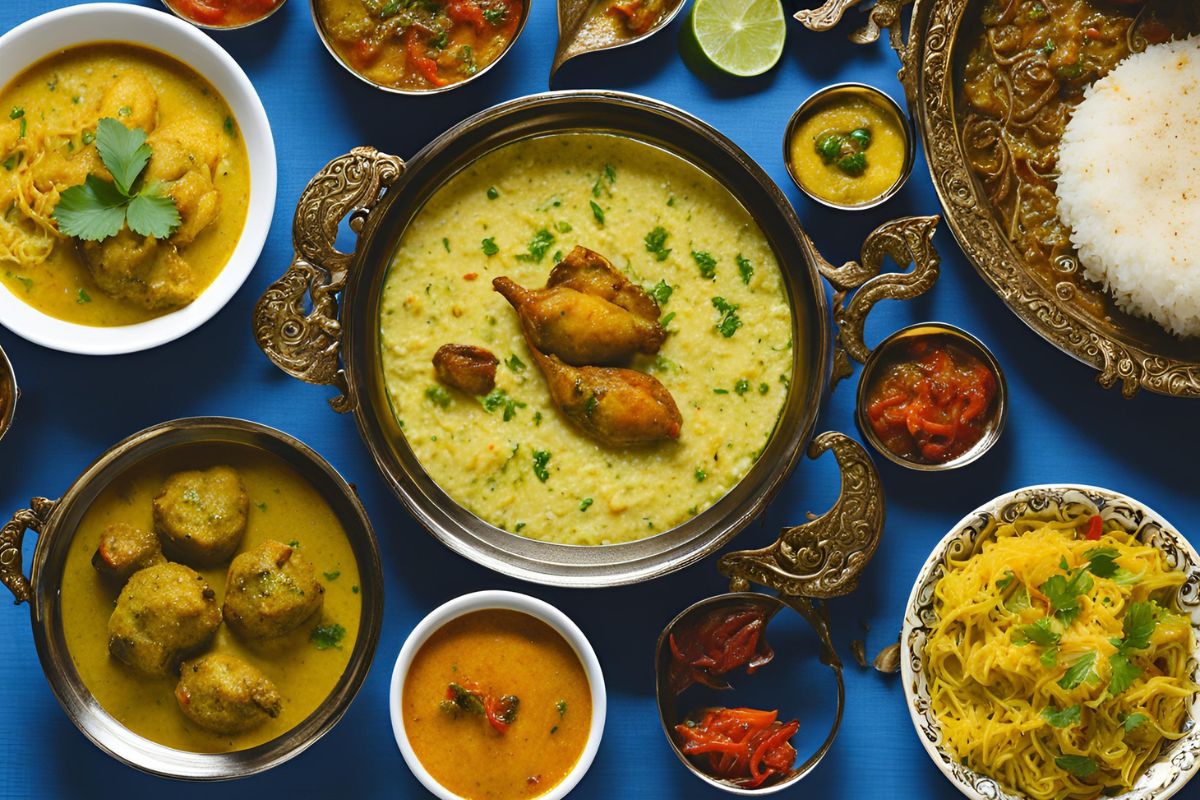


Bengali Food is distinguished by its concentration on fish, meat, and lentils, fresh ingredients, and well calibrated use of spices. The basic cuisine is rice; often complemented by a variety of side dishes that harmonise flavours, The sweets of Bengali Food are also well-known; they accompany every meal and celebration and are a main feature of each.
Table of Contents
ToggleBengali cookery is noteworthy in that it uses mustard oil, which gives food a special and strong taste. Using fenugreek, nigella, cumin, black mustard, and fennel seeds—a five-spice mix—panch phoron tempers foods. Fish is a mainstay of Bengali cooking; popular selections include Rohu, Hilsa, and Pabda. Usually presented alongside a range of lentils, vegetables, fish, and meat dishes, rice is the basis of most meals. Used liberally to increase heat and accentuate the taste of foods, green chillies
Although Bengali food is well-known for its meat and fish dishes, there is also an amazing range of vegetarian choices that highlight the region’s love of lentils and veggies.
Without including its world-famous sweets, any study of Bengali food is incomplete. Popular for their exquisite textures and sweet taste, Bengali sweets are enjoyed by many.
Bengali cuisine honors the seasons by using fresh, local produce. It also features special ingredients linked to specific times of the year. In summer, cooling dishes like tok dal (sour lentils) made with raw mangoes and posto dishes (poppy seed-based) offer relief from the heat. Monsoon calls for comforting meals like khichuri paired with fried eggplants or papads. Winter brings tasty treats made with nolen gur (date palm jaggery). You’ll find pithe, payesh, and sandesh. These foods add warmth and sweetness to harvest festivals. Seasonal changes affect the menu and show how Bengali cuisine connects with nature and local traditions.
Bengali celebrations are incomplete without a great array of traditional cuisine. For Durga Puja, special foods are served. These include Luchi-Alur Dom, which are fried flatbreads with potato curry. There’s also Khichiri, a rice and lentil dish, and Labra, a mixed vegetable curry. The event features festive treats like Narkel Naru, which are coconut sweet balls, and Bhapa Sandesh, a steamed cheese sweet.
Affected by several civilisations and cooking techniques, Bengali cuisine has changed over time. Rich and fragrant Mughal delicacies like Biryani and Korma arrived into Bengali cooking. The British colonial era introduced bakeries and confectioneries. This led to unique fusion desserts.
Bengali Food uses several strategies to improve the tastes and textures of the meals. Fish and sweets are often steamed bahapa, a common technique that guarantees they keep their wetness and delicate tastes. Another way to make meat curries is by slow-cooking bhuNA. This method helps the spices soak in well.
Bengali food reflects West Bengal’s rich culture. It offers a joyful exploration of tastes, textures, and smells. Each dish, whether it’s a tasty dessert or a spicy fish curry, tells a story of love for food and tradition. Bengali Food offers a fantastic gourmet experience. It’s great for everyone, no matter how adventurous you are with food. Discover Bengali cuisine and savor the true flavors that make it one of India’s favorite cooking styles. Good eating!

